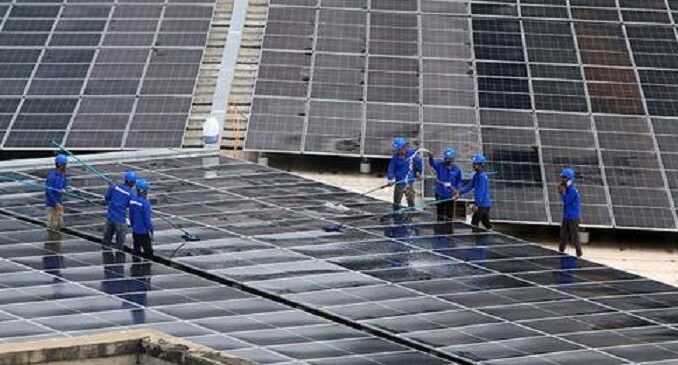
Chinese companies play important role in Cambodia’s solar development.
In 2018, Hengtong Optic-Electric secured the rights to build the country’s second-largest solar farm, which has a capacity of 200MW. Additionally, late last year, the China Datang Corporation announced a $600 million investment in solar and wind projects in Cambodia.
In April 2024 representatives of CHN Energy Investment Group Co. LTD, a Chinese state-owned energy company, met with the the Council for the Development of Cambodia in Phnom Penh. The Chinese delegation discussed opportunities for investments worth $1 billion in Cambodian renewable energy projects, focused on solar and hydro power.
Renewable or clean energy used in Cambodia has accounted for more than 62 percent of the country’s total consumption, according to the Cambodia Minister of Mines and Energy Keo Rattanak. By the end of 2024 renewable energy sources are expected to account for nearly 70 percent of Cambodia’s electricity generation.
Cambodia’s ‘Power Development Plan 2022-2040’ (PDP) aims to raise the share of renewable energy in the total power mix to 70 percent. The policy was formulated in tune with Cambodia’s commitment to be carbon neutral by 2050.
According to the PDP, Cambodia in 2022 had an installed solar power generation capacity of 432MW and by 2030 it will go up to 1,000MW and from there to 3,155 by 2040, indicating a proposed increase of nearly 800 percent over the period.
Solar energy in Cambodia, currently comprising only 7% of the country’s energy capacity, has emerged as the fastest-growing energy source, expanding over 14% in 2023. In 2022 hydropower accounted for 44 percent of Cambodia’s energy.
Under the Power Development Plan, local hydropower will go up from 1,330MW to 1,560MW by 2030 and 3,000MW by 2040. Power from renewable biomass, another source of clean energy, will go up from 27MW in 2022 to 98MW in 2030 and 198MW in 2040.
The Kingdom currently operates eight small solar farms, ranging from 5-80MW each, with three more under construction and three others planned, the largest of which is a 225MW farm in Kampong Speu.
While Cambodia plans to expand its portfolio with large-scale solar farms, the growth of small-scale rooftop and industrial solar has been sluggish due to policy challenges. The country prohibits net metering and net billing, though recent regulatory changes aim to replace capacity charges with new tariffs in an effort to boost rooftop solar initiatives.
Despite plans to achieve carbon neutrality by 2050, Cambodia has experienced power shortages in recent years, affecting as many as 43% of businesses. Rooftop solar could provide a solution for industries and help transform the lives of residents across the 245 villages yet to be connected to the electricity grid.
Sources:
- Eco-Business, July 22, 2024. https://www.eco-business.com/…/mapping-the-future-of…/
- Khmer Times, January 26, 2024. https://www.khmertimeskh.com/…/renewable-energy-to…/
- Khmer Times, April 10, 2024. https://www.khmertimeskh.com/…/chn-energy-to-explore…/